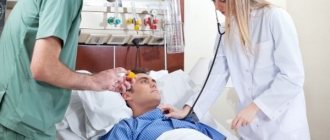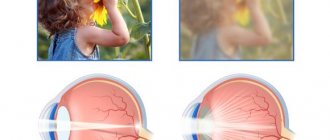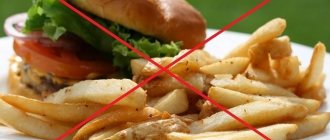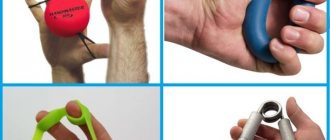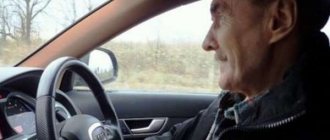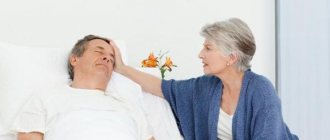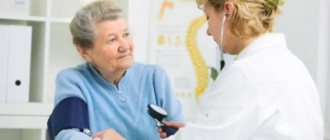Almost always, people after a stroke become unable to move independently and normally perceive information from the outside. In particular, they find it difficult to clearly pronounce and understand the words of others, and if necessary, they are unable to warn the nurse about their needs or say anything intelligibly to a loved one. If this is the most common pathology, then aggression or depression also occurs in almost every patient who has suffered a severe cerebral stroke.
Therefore, in some cases it is very important to pay attention to the behavior of patients after a stroke, since most often such patients, even as a result of complete restoration of motor and speech functions, may experience sudden mood swings. That is, if before the illness a person was not prone to frequent stress, then after completing the entire necessary rehabilitation course, he becomes more depressed or begins to show frequent signs of a negative mood.
It is important to consider such characteristics first and, if necessary, begin treatment with sedatives. But before such changes in the patient’s behavior are noticed, it is important to consult with a doctor, who will prescribe a specific course and the required dose of a sedative. Since uncontrolled treatment may not cause improvement, but, on the contrary, worsen the condition of the sick person. In this case, you should exercise some caution.
Main reasons
Impairment of cerebral blood flow often leads to loss of limb and brain function. Sometimes a person loses the ability to care for himself, the ability to do his job. These and other factors, which we list below, contribute to the emergence of neuroses and aggression:
- Damage to areas of the brain that are responsible for the emotional sphere. Most of these zones are in the temple area - the anterior cingulate gyrus and the parahippocampal gyrus. Parts of the frontal cortex - the anterior and middle frontal gyri - are also responsible for emotions and aggression. The limbic system (insula and amygdala) plays an important role.
- Large size of the ischemic focus. With microstrokes, there are practically no behavioral disorders. On the contrary, with major strokes, many functions are affected, including thinking and behavioral control.
- Aggravated psychiatric history. For those people who have a tendency or have already developed mental disorders before a stroke, the likelihood of their occurrence after it increases several times.
- Speech impairment. When the patient begins to speak incomprehensibly or speech is completely absent, his natural reaction will be depression or anger. Difficulties in communicating with loved ones further worsen your emotional state.
- Incorrect or late start of treatment. Drug therapy started in the first hours after the event greatly increases the chances of a full recovery. With minor changes (for example, slight weakness in the arm), people do not seek medical help, but wait “until it goes away on its own.”
In case of stroke, taking a number of drugs (Thiocetam) and rapidly lowering blood pressure is not recommended. Failure to comply with these measures may worsen neurological and mental disorders.
- Individual character traits, tendency to aggression. Have you noticed that your loved one has become active, excitable, and gets angry for minor reasons? This is probably a consequence of a stroke. If his behavior has always been like this, there is no need to try to correct it.
Sleep problems after a stroke: how to cure insomnia?
Insomnia is an unpleasant consequence of stroke, occurring in more than half of patients. In this article we will talk about the reasons for the development of insomnia, diagnostic methods, medicinal and non-medicinal methods of getting rid of this condition.
To recover, a patient who has suffered a stroke needs proper sleep. However, in 90% of cases these people suffer from insomnia. Such interruptions have a negative impact on further treatment, because you have to take additional medications against insomnia (the medical name for insomnia).
Insomnia has a negative effect on the body after a stroke: recovery processes are slowed down and disrupted, depression develops, and performance and mental activity decrease.
Causes
The causes of insomnia are influenced by various factors:
- After a stroke, a person experiences a malfunction in the brain and blood circulation is disrupted. Such changes lead to increased blood pressure. Basically, blood pressure rises in the evening, and this entails lack of sleep.
- Mental disorders. After a stroke, the patient’s perception of the world around him changes, anxiety, suspiciousness, apathy, and irritability appear. A person’s mood can change several times in a day. He is constantly haunted by a feeling of fear, loss of faith in further recovery, and this all develops into depression. As a result, insomnia occurs.
- One of the factors for sleep loss is a person’s age category. After a stroke, the body wears out even more. A person gets enough sleep during the day, and restless and short-term sleep comes at night. This is also part of a mental disorder or fear of being unwanted.
- After a stroke, breathing is most often impaired, so apnea of a central or obstructive nature occurs. It is snoring that can prevent the patient from sleeping, especially if there was no apnea before (in this case, the patient hears his own sounds).
- Sleep disorders can occur against the background of movement disorders, which are characterized by sympathetic hyperactivity, that is, after a stroke, the patient develops restless legs syndrome, which prevents full sleep.
- External stimuli. The duration of sleep and its usefulness are influenced by external irritants:
- ambient noise;
- increased room humidity;
- air temperature;
- bright lighting.
Diagnostics
To identify the cause of insomnia after a stroke, the patient is prescribed a comprehensive instrumental diagnosis, through which nasal air flow is assessed, respiratory movements are recorded and oxygen saturation is determined. For a more in-depth examination, a polysomnographic research method is used.
How does a stroke affect a patient’s behavior?
It is especially common to hear about how one of the family members suffered a terrible tragedy, an ischemic or hemorrhagic stroke. And everything seems to be fine, more than a year has passed since the rehabilitation of the stroke, but one very unpleasant event for everyone appeared: the person began to show aggression towards others, including people close to him.
This could very likely happen due to his current condition, when in the process he develops a feeling of alienation, loses any desire to live on, and also to believe that he can recover and return to normal life after a stroke.
How to act in such a situation and help restore the psyche of a sick person:
As a rule, many stroke victims are not immediately able to cope with their depression on their own, even after drug treatment. Therefore, doctors in this case advise talking to the patient as often as possible, telling him about past interesting events.
Including increased attention will also help improve his external and internal condition. If it is still very difficult for the victim to get out of bed, help him and go out with him for street walks. Treatment in rehabilitation centers will also contribute to this. Sedatives, taken in moderate doses as prescribed by a doctor, help eliminate problems with falling asleep, since lack of sleep can also affect the behavior of a healthy person during the day.
After a stroke, victims should not be given any reason to engage in heavy physical work, including prohibition from performing excessive exercises. It is important to ensure that the patient does not try to drown out his troubles with bad habits. If possible, it is necessary that he begins to gradually reduce the dose of alcohol and tobacco products. Especially for women who have a stroke at first, it is not always easy to give up sweet confectionery products
In case, instead, you can offer sick people to include dried berries and fruits in the menu, and use fructose or natural honey instead of sugar. How often can hot weather affect the well-being of people suffering from heart failure? Therefore, if possible, limit the patient’s stay outside in hot weather. Together with the use of antidepressants and sedatives, various therapeutic measures, including at home, can be beneficial during the rehabilitation process. This category includes doing physical exercise, communicating with loved ones, as well as any hobbies for a sick person.
But even despite the correctness of the approach when caring for a patient at home, if his mental changes begin to bring really great difficulties when communicating, it is important not to leave him without the necessary help. And immediately for any manifestations of depression, stress or aggression, seek help from medical professionals
But doctors do not advise taking any measures without permission to use sedatives and sedatives.
Treatment of stroke consequences
Unfortunately, stroke attacks are never without consequences. In this material we will describe such post-syndromes as paralysis, dizziness and the appearance of attacks of aggression.
Dizziness after a stroke
A fairly common occurrence after a stroke is headache and dizziness, which greatly affect a person’s well-being, activity, capabilities, and, ultimately, ability to work.
How can I improve my condition, get rid of these sensations, or at least reduce them to a minimum?
Folk recipes help very well with such well-being - treatment after a stroke with herbs such as calamus, peony, celandine or aloe will certainly have a positive effect.
Treatment for paralysis after stroke
The presence and degree of paralysis of individual body functions depends on how quickly and effectively first aid for a stroke was provided to the patient. Since if the victim received timely and effective help, the motor functions of the body (face, arms, legs) are restored spontaneously during the treatment process.
Otherwise, the patient may suffer greatly, find himself completely helpless and dependent on others. People in this state are very afraid of becoming a burden. This is called spasticity after a stroke - its treatment is quite possible.
A positive environment can help, allowing a sick person to believe in himself and be confident in the support of loved ones. In this situation, a comprehensive treatment is needed that combines medication with massages, physical therapy and a comfortable psychological atmosphere.
Drug therapy using sedatives
If in a hospital the patient spends most of his time under the supervision of doctors of various profiles. Then after the patient is discharged, he turns out to be at home under the supervision of his relatives. This is exactly the moment when close people can notice a clearly changed behavior of the patient.
But before this, it is important to follow the advice of an experienced doctor and follow his recommendations, which may include the following medications:
Glycine has no contraindications, so it can be used to stabilize mental abilities among school-age children. So, and as first aid immediately after an impact. Glycine is very useful for maintaining the mental health of older people, including its use in stabilizing high blood pressure. In this case, also to prevent stroke, glycine must be placed one tablet under the tongue three times for 30 days. In addition, glycine has an equally beneficial effect on hypertension and cerebral atherosclerosis.
Actovegin after a stroke can be used at any stage of rehabilitation. The drug has a good effect on increasing the resistance of blood vessels to destruction. It may be prescribed for high blood sugar and high cholesterol in a person’s blood.
It does not cause side effects even when Actovegin is taken together with other sedatives. For example, Actovegin together with Cortexin, on the contrary, will help increase the recovery of nerve cells after a stroke and other ailments associated with disorders of brain activity.
Mexidol is basically the medicine that the doctor prescribes to patients during the first time of the recovery phase. Used as an antioxidant that promotes tissue regeneration in the human body. Penetrating into the blood, it helps to increase the protective functions of the immune system.
Helps reduce the effect of alcohol on the blood vessels of the brain. Destroys toxins and removes them from the body. Restores brain function.
Tsiraxon contains the active substance citicoline. Restores nutrition in nerve cells. Improves the patient's cognitive abilities. Reduces pressure in the circulatory system
Helps increase the concentration and ability to hold the attention of victims. Most often prescribed for particularly severe cases of stroke. Cynarizine has increased effectiveness in improving blood circulation throughout the body
Restores the internal composition of the blood, reduces the number of platelets.
May be prescribed for primary symptoms of TIA. Does not affect the functioning of the cardiovascular system.
In addition to the drugs listed above that help improve the mental state of sick people, it would be useful to use the services of specialized sanatorium-type medical institutions. Where patients will not only be among the same victims as they suffered from a stroke, but will also receive the necessary assistance in a timely manner from medical personnel and their loved ones.
The effectiveness of drug therapy
Having a stroke can have a dangerous outcome. Regardless of the degree of brain damage, the patient experiences the following symptoms:
- paralysis of the limbs (on the right or left side of the body);
- numbness of fingers, tongue, sensory disturbance;
- immunity to external stimuli (cold, heat, etc.);
- deterioration of coordination;
- headache;
- memory loss;
- muscle spasticity;
- dementia;
- decreased mental abilities;
- speech disorder;
- violation of fine motor skills of the hands.
All of these factors are a consequence of oxygen starvation that the brain experiences during blockage of blood vessels during a stroke. Drug treatment is aimed primarily at restoring brain function and preventing blood clots in blood vessels.
It should be understood that medications are also important in psychotherapeutic work. Most patients after a stroke become depressed due to their helplessness. A person becomes aggressive or, conversely, withdraws into himself. Such conditions are treated by a psychotherapist using medications.
Drugs after ischemic stroke
Since ischemic stroke develops due to blockage of blood vessels, the first treatment is aimed at restoring normal blood flow in the brain. For this purpose, medications from the group of anticoagulants are used, which are necessary to thin the blood and also avoid new clots.
However, if the damage is too extensive, anticoagulants can be dangerous, causing bleeding and hemorrhagic stroke. This is due to increased blood pressure caused by medications. Contraindications also apply to cases of stomach and duodenal ulcers, liver and kidney diseases.
Drugs after hemorrhagic stroke
In case of a hemorrhagic stroke, it is necessary to stop the bleeding in the brain and bring the blood pressure back to normal. For this purpose, angioprotectors and ganglion blockers are prescribed.
For any type of hemorrhage, drug therapy always uses drugs that improve brain activity. Neuroprotectors are necessary during rehabilitation (Ceraxon, for example, prevents further damage to brain tissue and improves the functioning of nerve impulses).
Antidepressants
These are post-stroke medications, the effectiveness of which was confirmed by research conducted at the University of Iowa. Antidepressants are included in a complex of drugs that are used in the process of rehabilitation of patients. Psychotherapy plays an important role. But antidepressants work differently, they:
Increases learning ability. Improves memory. Helps normalize mood. Increase attention.
Sedatives or sedatives will not help achieve this result. In practice, it is proposed to use selective serotonin reuptake inhibitors.
The studies were carried out on patients of two groups. Some patients were given a placebo (dummy pills), others were given antidepressants. In the second group, upon completion of the course of treatment, an increase in conjectural functions was noted.
Research and their results made it possible to include antidepressants in the list of drugs used after a cerebral stroke. The duration of the course is determined by the doctor.
Treatment at home
Alternative medicine also helps treat stroke and is used as an adjuvant. Folk remedies help control blood pressure, normalize blood circulation, and enrich the composition of the blood. They should be used only in combination with drug treatment, and after consultation with a doctor. Traditional medicine cannot be replaced with herbs.
Rehabilitation includes therapeutic exercises to restore motor functions, strengthening massage, speech therapy sessions and other methods. Swimming, walking, and any sports activities with moderate physical activity are recommended.
Related materials
- Full recovery after a stroke is possible. For many patients, a stroke causes loss of mobility, and...
- Aspirin is most effective for mini-stroke For patients who have suffered a mini-stroke, taking aspirin is the most effective way…
- Antidepressants are effective in preventing stroke and prolonging youth. Dutch researchers have found that taking certain antidepressants will help patients reduce...
- A simple blood test can help determine the type of stroke A simple blood test can help determine the type of stroke, suggest researchers from...
- Patients after a stroke will benefit from stem cell treatmentStem cells can be used to treat patients who have suffered ischemic…
- Knowing two languages makes it easier to survive a stroke. An unexpected discovery was made recently by researchers from the University of Edinburgh. Scottish...
Medications
When diagnosing the condition of a patient suffering from insomnia after a stroke, the doctor prescribes a certain type of sleeping pills, as well as antidepressants (doxepin, mirtazapine, trazodone). As a rule, benzodiazepines (psychoactive substances with hypnotic and sedative effects) of short, medium or long action have a positive effect:
- diazepam
- flunitrazepam
- nitrazepam
- clonazepam
- zaleplon
- zopiclone
- zolpidem
- phenazepam
- signopam
- tazepam
It all depends on the patient’s condition and the global nature of his problem. The use of benzodiazepines increases the likelihood of side effects in old age. An additional drug in the post-stroke period may be nicergoline. This drug not only reduces the symptoms of insomnia and mental disorders, but also helps reduce the tone of the cerebral arteries and improves blood flow. However, you should avoid long-term use of such medications due to the rapid addiction to them.
Treatment at the initial stage
Sudden blockage of blood vessels in women and men manifests itself as dizziness, severe headache, nausea accompanied by vomiting, immobilization of parts of the body (often the left side). A hemorrhagic stroke is characterized by the same symptoms, but they are often accompanied by sudden loss of consciousness and coma.
If any signs are detected, especially in elderly patients, it is necessary to call an ambulance. While she is driving, the patient should measure his blood pressure. If the readings are significantly higher than normal, you can give an antihypertensive medication previously prescribed by your doctor. Otherwise, it is recommended to place the victim on a bed with the head of the bed raised and closely monitor his well-being.
As first aid, intramuscular injections of neuroprotectors are given, which can reduce the spread of dying areas and normalize blood circulation in the brain. Their names are Encephabol, Cerebrolysin and Glycine.
Important! At the early stage of a stroke, it is prohibited to take vasodilating drugs (No-shpa, Papaverine). On damaged tissues they have the opposite effect, reducing blood circulation, which leads to aggravation of the situation
Dementia medications for elderly people with severe stages of the disease
The severe stage of dementia is accompanied by complete degradation of a person. He does not remember his relatives and friends, and is unable to eat or care for himself. He may be delusional and afraid of aggression from other people. In this case, the neurologist observing the patient prescribes “Halopiredol” or modern analogue drugs: “Olanzapine”, “Risperidone”. At the same time, the patient continues to take medications that the patient took before: to maintain memory, antidepressants, sedatives.
- "Risperidone".
It is prescribed if an elderly person has signs of psychosis, delusions, or hallucinations.
This medication suppresses severe irritability and aggressive behavior. While taking the drug, the patient’s hostility, excessive excitement, anxiety, apathy, and detachment decrease. The old man returns to normal thinking, speech functions and social interaction with other people are restored. Contraindications for use: Parkinson's disease, epilepsy. This drug is approved for use in schizophrenic dementia. Recommended articles to read:
- Social services for older people
- Diseases of old age
- Valuable tips on how to choose a boarding house
- "Olanzapine."
Used as a replacement for the drug "Halopiredol". Treatment of dementia in older people with the drug "Olanzapine" produces a good effect against hallucinations, improves the condition of depression, anxiety, and various mental disorders. The drug has proven effectiveness in treating dementia of the schizophrenia type. According to scientific examinations of patients, Olanzapine is more effective than Halopiredol in restoring cognitive connections and eliminating mental disorders. The likelihood of these symptoms returning when treated with this drug is lower. It also successfully copes with speech disorders, is effective in reducing social activity, signs of manic attacks, schizophrenia, and memory loss. At the same time, the drug can provoke the development of diabetes mellitus, hypertension, cause weight gain, cancer, and increase the risk of myocardial infarction and stroke. These are its main contraindications for use in older people who are at risk for these pathologies.
- Exelon patch.
The patch is very easy to apply, so an older person with dementia does not need to have any special skills.
It is needed to ensure a continuous supply of a drug called Rivastigmine through the skin. To do this, you just need to stick the patch on the body in a place where there is no strong friction with clothing. It should be changed every day, strictly at a certain time. Thanks to this, a stable supply of the required amount of the drug will be established in the blood. While wearing the patch, the patient is allowed to take a bath or shower or visit the pool. You can’t just use the sauna and bathhouse due to high temperatures. Read the material on the topic: Loneliness of older people
Traditional medicines to improve brain activity
In addition to the use of medications to treat neuroses, problems associated with nervous overstrain can be started by using a sedative of natural origin:
To do this, you need to take 40 grams of dry herb, motherwort pentaloba, one half of hawthorn and chamomile flowers, adding to them 2-3 pinches of St. John's wort and two glasses of boiling water, leave for no more than 5 hours. Then strain the mixture through a sieve.
The finished medicine must be drunk within 24 hours each time after eating. The treatment session should not exceed more than one month.
- Warm milk and honey have a calming effect, especially if you consume this mixture immediately before getting ready for bed.
- Mint also has sedative properties, which is why an infusion of this herb can be drunk not only as the main medicine to relieve nervous tension, but also as a mixture of 1 teaspoon of mint decoction and 4 tbsp. Stir l of the finished kombucha drink and mix it all together with 360 grams of linden honey. This drug can be taken in small portions throughout the day.
The most famous herb for quick recovery from stress is considered to be valerian, which can be observed especially often among both young women and people over 60 years of age. It is these factors that sometimes become the cause of frequent disorders and worries, which ultimately leads to disorders in the nutrition of the brain.
It is necessary to mix dry valerian herbs in an amount of about 50 grams with ¼ share of lemon balm, pour one glass of hot water. Infuse for noon, then drink 3-4 s. l each time 2 hours before meals.
To combat insomnia, you can start using this decoction. Pour crushed hop cones with water and boil. Let the mixture cool for 30 minutes, pass through a sieve and take each time an hour after meals. This decoction also helps to cope with frequent headaches.
The remedies listed above have practically no side effects, so they can be used perfectly both as a recovery remedy for a stroke and to improve one’s own health. But, despite this, you should start using them only after the doctor gives his consent. Since the unintentional use of drugs may negatively affect the condition of the injured person.
Exercise therapy technique for stroke
If mobility is limited, stroke survivors need to engage in physical therapy daily. With paralysis, exercises are performed in a passive form, that is, with the help of another person. You need to start with flexion-extension manipulations on the limbs. It is important to work out the joints: arms, legs, fingers. Strengthen muscles and restore blood flow in affected limbs. In addition, passive exercise prevents the occurrence of bedsores and skin wounds characteristic of bedridden patients.
As soon as the patient begins to assume a sitting position, it is time to begin active physical therapy. The stroke patient must bend and turn from side to side, swing his arms, flexion and extension of the upper and lower extremities, and turn his head to the right and left.
Then they begin to develop the mobility of the body. The patient stands with support on his legs, it is important to feel them. Afterwards you need to alternately tense and relax your fingers. Then they move on to learning to stand without support and walk. To enhance the effect, exercises are combined with massage and therapeutic baths. This way muscles and joints become more flexible, pain and tension go away.
The main thing is to follow all the advice of a neurologist and take medications strictly according to the prescribed regimen. Other rehabilitation methods should also be carried out under the supervision of a specialist.
Duration of the recovery process
This is influenced by many factors: from the source of the lesion to the correctness of the assistance provided. The more negative factors, the worse the prognosis. If the damage is severe, you will have to work on recovery throughout your life, but this does not guarantee that the person will be completely able to lead a normal life.
The approximate recovery time is as follows:
- If the attack was short-lived and disturbances occurred in the form of slight paralysis of the limbs and face and dizziness, rehabilitation after a stroke at home can take about three months.
- For strokes with deep paralysis, a person can partially recover after six months. It is rare to fully restore brain function, and the process can take several years.
- With a severe form of stroke and consequences such as paralysis of half the body and others, a person can learn to sit in a year or two, but it is impossible to fully recover.
From this we can conclude that the more severe the attack, the longer the rehabilitation period will be.
The likelihood that brain function will be restored is greater if the patient had an ischemic rather than a hemorrhagic stroke. Share the article on social media. networks:
The moral state of the patient as a cause of insomnia
Quite often, a person who has suffered a stroke begins to feel depressed. For some it is less noticeable. At first glance, the patient seems absolutely calm, there is no negativity in his behavior, but this is not a reason to relax. You need to watch him, perhaps he began to laugh less and sleep worse at night. In acute forms of depression, the victim becomes very suspicious, sentimental, it seems to him that life is over and there is only inevitability ahead, a feeling of apathy appears, he becomes extremely hot-tempered and loses hope of recovery. All this negativity emanating from the patient disturbs his peace and sleep. In such cases, the attending physician is forced to prescribe sedatives and sleeping pills to the patient in order to protect the patient from relapse of the disease.
ethnoscience
To reduce your dependence on medications and eliminate the occurrence of side effects from them, you can use “grandmother’s methods” of treating insomnia. It is very useful to drink tinctures of soothing herbs at night (lemon balm, motherwort, valerian, St. John's wort) or brew teas from them. Aromatherapy sessions will also be useful. Before going to bed, light incense sticks or candles and deeply inhale the aromas; they will calm the human nervous system and set you up for long, quality sleep. In addition, you can use a special sleeping pillow filled with dry plants with a fragrant and pleasant smell.
It is important to support the patient in the post-stroke period. Remind him in every possible way that he will recover and that all this is temporary. Give him positive emotions, a smile and joy. Try to protect him from negative factors that worsen his physical and psycho-emotional state. And for any manifestations of depression, aggression or stress, immediately seek help from a medical facility in order to protect the patient from relapse.
source
